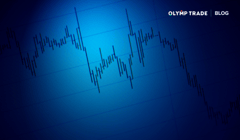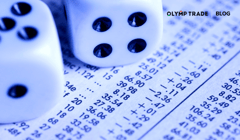2020 ended up as a very difficult year for many industries and many companies, but there were undoubtedly some businesses that only benefited from the coronavirus crisis. Generally, we are speaking about companies in the entertainment and computer industry working on TV streaming, video games, and social networks.
After all, how else can you entertain yourself at home? This factor added users’ attention even to the stocks of some new companies. On the other hand, due to the crisis, the most adversely affected companies belong to the so-called real sectors of the economy.
The manufacturing sector, the passenger transportation sector, and others except “big pharma” are facing an enormous setback. However, the saying goes – crisis is the time of opportunity. The fall of individual stocks can be very profitable for investors that include those stocks in their portfolio. It only requires investors to form their portfolios in the best way possible.
Growth or Value: Choose Wisely
When approaching the decision of a portfolio of stocks, one should first think about such concepts as the industry in which a particular company operates, and the risks associated with it, the future prospects of the company, and also whether the company is a “growth stock”.
The best way to invest in stocks is to remember that there are two classifications:
- Growth companies — usually those companies that demonstrate high rates of revenue growth but may not pay good dividends or any at all.
- Value companies — these companies usually do not grow at a high rate but are willing to generously share their net profit with shareholders.
We think that the best investment option in this situation is a mix where we diversify our portfolio to include both growth and value stocks.
Let’s take a look at the best stocks to invest in right now.

Facebook (FB)
Business: The largest social network in the world, founded in 2004.
Capitalization: $772.2 billion.
Dividend Yield: The company does not currently pay dividends.
The ratio of all liabilities to all assets of the company in 2020 was 19.5%, for 2019 – 24.2%, for 2018 – 13.5%, and for 2017 – 12%. This is a very low debt burden, which reduces investment risks.
The company’s assets at the end of 2020 amounted to $159.3 billion and share capital of $128.3 billion. This means that the market value is almost 5 times the company’s share capital.
Growth of the company’s revenue for 2019 – 2020 amounted to 21.5%. At the same time, the company’s net profit increased by 57.6% to $29 billion.
- For 2017–2018 revenue growth was 37.3%.
- For 2016–2017 revenue growth was 47%.
The company’s revenue growth rates are very high, which clearly demonstrates it as a growth company. This makes it one of the best companies to invest in.
Company Price Multiples
- P / E = 34.6 (inverse ratio is 2.8%).
- P / S (main multiplier for service companies) = 10.28 (7.75 in the industry)
- P / BV = 7 (industry-wide 5.67)
Almost all multiples are above the industry values, which means that the share price is somewhat overvalued.
The 5-year average operating margin is 41.25% (industry 21.23%), ROE is 21.98%, ROA is 18.99%. The company has very high profitability indicators.
According to a Digital 2020 survey, at the beginning of 2020, more than 4.5 billion people use the Internet, which is 7% more than in 2019. Approximately 60% of this audience use social networks.
According to the latest report from the company, the number of active web users was 1.79 billion. In all likelihood, the growth trend will continue, which compels us to positively assess the company’s future profits.
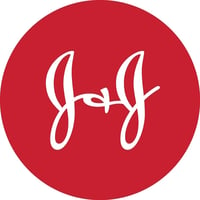
Johnson & Johnson (JNJ)
Business: American holding company that leads a group of more than 250 subsidiaries around the world and manufactures pharmaceuticals, hygiene products, and medical equipment.
Capitalization: $391.11 billion.
Dividend Yield: 2.65%.
The ratio of all liabilities to all assets of the company:
- 2020 — 63.8%
- 2019 — 62.2%
- 2018 — 60.9%
- 2017 — 61.7%
This means that the company’s debt burden is not very high and the risks of investing in the company are low.
The company’s assets at the end of 2020 were $174.9 billion. The cost of share capital was $63.2 billion. Market valuation is 2.2 times higher than the company’s assets.
For the last reporting period, the revenue growth rate was near zero. At the same time, the growth rate of net profit is negative. Despite this, the company’s shares look undervalued.
Company Price Multiples
- P / E = 29.2 (industry average is 41.71)
- P / S = 5.02 (industry average is 83.57)
It is also worth paying attention to the company’s profitability indicators, which are also quite high. Return on equity (ROE) is 23.51%, and the return on assets exceeds 10%, which is above the industry average.
The dividend payout ratio is almost 73%, which makes the company attractive from the point of view of inclusion in the portfolio as a dividend producing company (value company).
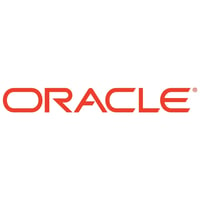
Oracle Corporation (ORCL)
Business: American corporation, the second largest software manufacturer in terms of income, the largest manufacturer of software for organizations, and a large supplier of server hardware.
Capitalization: $183.3 billion.
Dividend Yield: 1.61%.
The ratio of all liabilities to all assets in 2020 was 89.4%. The company’s debt burden has grown and this adds risks when investing.
The company’s assets for the last reporting period amounted to $115.4 billion.
For the last 4 annual reporting periods, the company has not demonstrated revenue growth rates. However, the price multiples are significantly below the industry average, which means that stock prices are undervalued.
Company Price Multiples
- P / E = 18.98 (in the industry 53.43)
- P / S = 4.64 (in the industry 9.02).
The company’s return on equity (ROE) is significantly higher than in the industry, which speaks of highly effective management. In addition, the company allocates about 30% of its net profit for dividend payments.
Consequently, Oracle is a good dividend company, which is worth buying with the expectation of stable dividend payments, but not much in terms of growth of market value.

Walt Disney Company (DIS)
Business: One of the largest media and entertainment conglomerates in the world.
Capitalization: $357.3 billion.
Dividend Yield: 1.3%.
The ratio of all liabilities to all assets in 2020 was 58.2%. The company’s debt is quite low, which means that the risks of investing in such shares are minimal.
The company’s assets for the last reporting period amounted to $201.5 billion. The market overestimates the value of the company by almost 1.8 times.
Over the past few years, the company has demonstrated fairly high revenue growth rates. The company’s revenue growth in 2018 amounted to 7.8%. In 2019, revenue grew by 17%, but in 2020, the company’s revenue decreased by 6%. This is due to the current situation with the coronavirus pandemic.
The company’s management works efficiently, as evidenced by its high profitability: ROE = 12.86%, ROA is 6.23%.
Investing in the Walt Disney Company carries certain risks, given the negative revenue growth rate over the last reporting period. However, the consequences of the coronavirus crisis must be taken into account. This means that the growth potential of this company still remains.
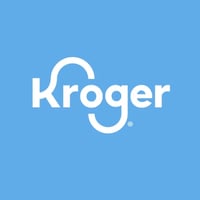
Kroger Ko (KR)
Business: American supermarket chain, founded in 1883 in Cincinnati. The chain is the second largest retailer in the United States after Walmart.
Capitalization: $26.32 billion.
Dividend Yield: 2.09%.
The ratio of all liabilities to all assets in 2020 was 80.9%. The company’s debt is not prohibitively high. The risks of investing in such stocks now are relatively low.
The company’s assets as of February 2020 (end of the reporting period) were $45.26 billion. The cost of share capital was $8.6 billion. This means that the value of the company’s assets exceeds the market value of the business by more than 1.7 times. This is a positive factor when investing.
The company’s revenue growth for the last reporting period amounted to about 1%, while during the previous period growth rates were negative. At the same time, it should be noted that the company’s net profit for the period of 2018 increased significantly due to a reduction in operating costs. Kroger Ko is a value company.
Company Price Multiples
- P / E = 9.87 (in the industry 515)
- P / S = 0.19 (in the industry 0.97)
- P / BV = 2.55 (industry-wide 5.14)
The company’s key multiples are significantly lower than those in the industry, which may indicate an underestimation of the company’s share value.
Company’s profitability: ROE = 27.34% (on average over 5 years), ROA = 5.21% (in the industry 8.72). The return on equity of the company is quite high. Management works efficiently. The return on assets, unfortunately, lags behind the industry average.
The inclusion of these shares in your portfolio is possible as a dividend company.
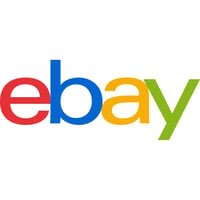
eBay Inc. (EBAY)
Business: American company providing services in the areas of online auctions and online stores.
Capitalization: $37.53 billion.
Dividend Yield: 1.28%.
The ratio of all liabilities to all assets for 2020 was 81.5%, for 2019 – 84.2%. As you can see, over the past year, the company’s liabilities have decreased. This is a positive factor when investing.
The company’s assets in 2020 amounted to $19.3 billion, i.e. the value of the business, according to market estimates, is almost 2 times higher than the value of assets.
Over the last reporting period, the company managed to significantly increase the rate of revenue growth. eBay earned $10.2 billion in 2020, up from $8.6 billion a year earlier. The growth rate of revenue was 18.6%.
The company’s key multiples are lower than industry values.
Company Price Multiples
- P / E = 15.65 (in the industry the same indicator exceeds 200)
- P / S = 3.72 (in the industry 5.56)
- P / B = 10.79 (Industry average is 16.63)
Low values of multiples indicate that the share price may be undervalued, i.e. they become attractive to purchase.
The company’s profitability is quite high. The average ROE over 5 years is 46.11%, which indicates high management efficiency. The return on assets was 13.83%.
eBay shares are recommended in your portfolio.
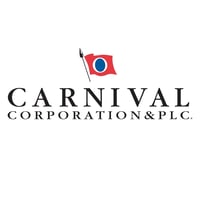
Carnival Corporation & plc (CCL)
Business: multinational cruise line and one of the world’s largest cruise tourism companies.
Capitalization: $30.1 billion.
Dividend Yield: 3.18%.
The ratio of liabilities to assets is 61.6% – this is a rather low level of debt, which reduces the risks of investing in the shares of this company.
The company’s assets at the end of 2020 amounted to 53.6 billion, which means that the value of assets is 1.8 times higher than the value of the business according to market valuation. This is a positive factor.
Revenue for the last crisis year has decreased significantly. In 2020, the company earned just $5.6 billion, while the net income fell below zero. Here, as in the case of the Walt Disney Company, it is necessary to take into account the specifics of the company’s business.
The pandemic had a very significant impact on the company’s financial performance, but after the end of the coronavirus crisis, further growth can be expected. Right now these are cheap stocks.
The 5-year average return on equity and assets of the company is higher than in the industry. ROE = 11.09%, ROA = 6.53%. This points to very high efficiency of the management staff.
Conclusion
We have identified for your portfolio a range of stocks that are either already attractive from an investment point of view due to a sufficiently high dividend yield, or are potentially attractive in the event of a resumption of growth.
At the same time, it must be remembered that any portfolio formation can in no way be considered as something static and should always be revised as the situation changes.

